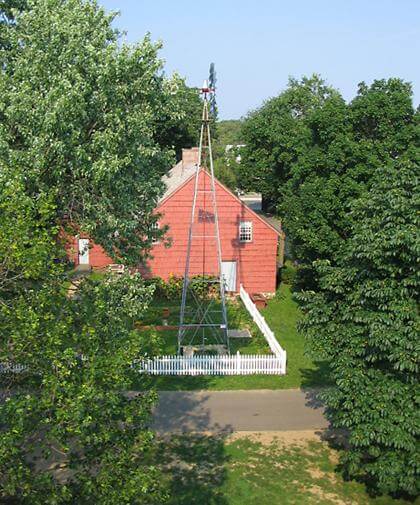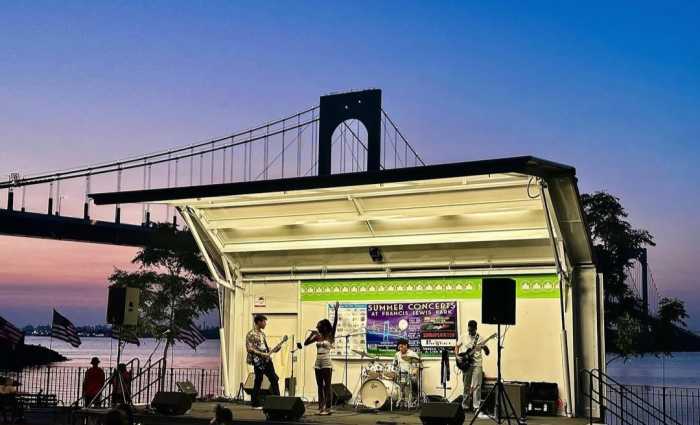By Nathan Duke
Mayor Michael Bloomberg may be eyeing the possibility of placing windfarms atop city structures to generate energy, but two northeastern Queens institutions are already ahead of the curve, using windmills to pump water to their orchards and gardens.
The mayor, who has initiated a plan to make the city greener by 2030 as its population is expected to increase by 1 million people, has floated the idea of placing wind turbines on top of city bridges, skyscrapers and other tall structures to provide electrical power for the five boroughs.
But Floral Park's Queens County Farm Museum and Douglaston's Alley Pond Environmental Center are among the only city sites that already use windmills for power. Both institutions use the mills to pump water and irrigate their orchards, lawns, gardens and trees.
“I know that windmills are very large, but I think it's a viable option to generate alternative power,” said Amy Fischetti-Boncardo, the Queens County Farm Museum executive director.
“We call them gentle giants. It's exciting that so many people are getting interested in wind power. We have to change our thinking in terms of alternative sources of energy, and I think windmills are one of the safer alternatives,” she said.
The farm museum's 45-foot windmill tower pumps water from a 105-foot-deep well that irrigates its orchard, herb garden and lawns, Fischetti-Boncardo said. The structure, built in 2005 and modeled after a 1903 windmill, also includes a 10,000-gallon holding tank that brings up two cups of water each time it pumps, she said.
“It's very rare that the windmill's blades are still because there is usually a slight breeze,” she said. “There's almost continuous pumping action going on at the windmill. The orchard trees are irrigated solely with well water generated by the windmill, which is a tremendous energy saver. Plus, it's calming — very nice and quiet.”
Alley Pond Environmental Center's windmill was first constructed in the 1870s and its property was sold in 1986, said Aline Euler, the center's education director. But a suspicious fire destroyed the mill one year later, so community activists raised money to create a replica, she said.
The mill, which stands more than 40 feet above ground atop a tower, pumps water from a 50-foot well onto the center's garden and trees, Euler said.
“It proves that you can generate and use wind as a renewable and nonpolluting source of power,” she said. “People who came into this country as early settlers used windmills.”
Dutch settlers built windmills in New York and along the Atlantic Coast as early as the 1600s to generate power.
Euler said she, too, supported Bloomberg's idea to use wind turbines to create city power.
“I think it's a great idea,” she said. “You see antennas for the television on top of homes. So, I think maybe 50 years from now or less, we may see homes with windmills on top.”
Reach reporter Nathan Duke by e-mail at nduke@timesledger.com or by phone at 718-229-0300, Ext. 156.


































